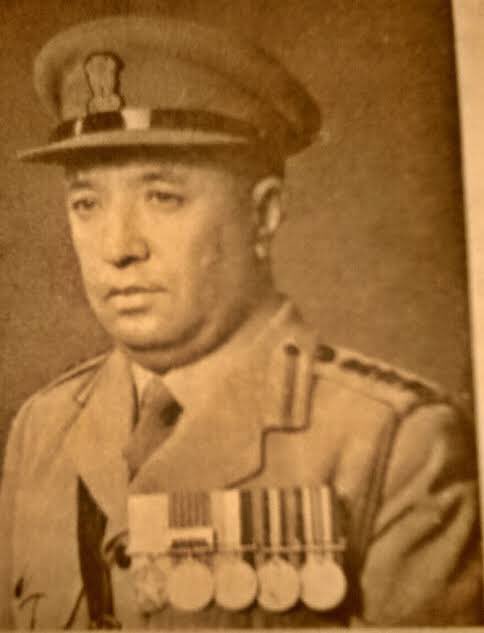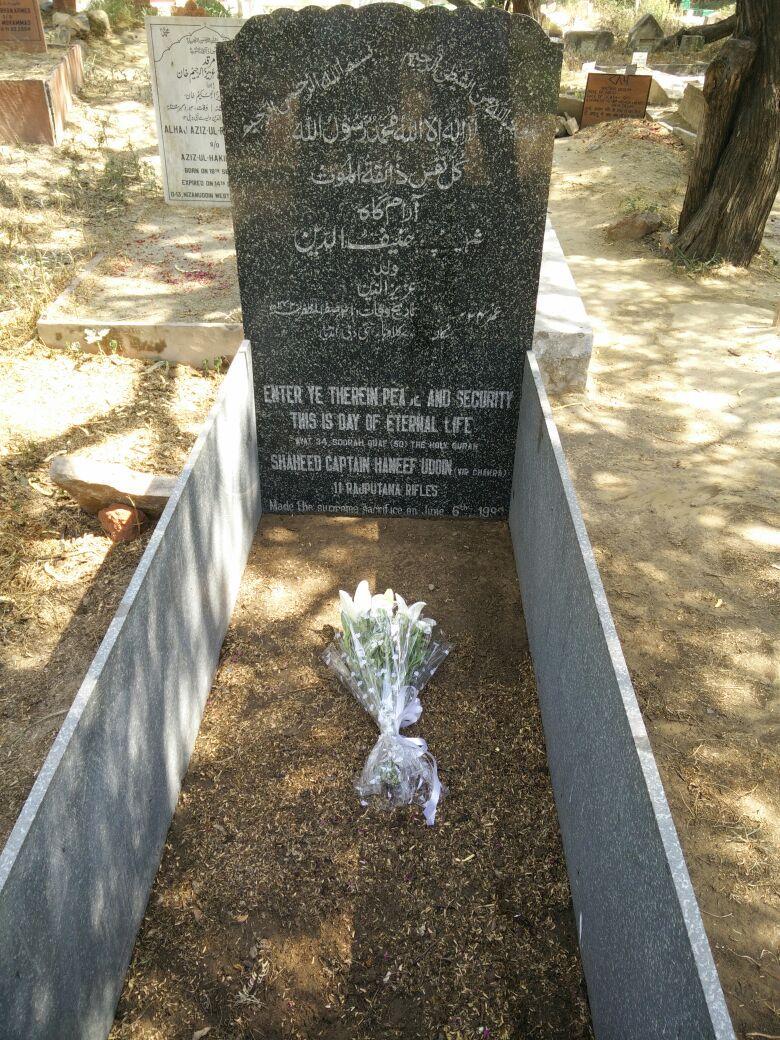The Story Of Turtok - Recaptured In 1971 And Defended In 1999
Homecoming
The year was 1971 and Indian troops had surrounded Dacca (Dhaka), putting Pakistan on the verge of losing its eastern half. Pakistan’s ‘Operation Searchlight’, in which innocent civilians in Bangladesh (then East Pakistan) were massacred, was ending with a shameful defeat at the hands of Indian troops and the Mukti Bahini.
Realizing the inevitable, Pakistan launched operations on the Western front with the hope of gaining territory to have something on the negotiating table.
The Western Front witnessed some of the most decisive battles that would go down in the annals of India’s modern military history.
Credits: YouTube/PrasarBharatiArchives
Battle of Turtok
Turtok, a remote village nestled in Ladakh along the Shyok River, was a part of the Pakistan Occupied Kashmir’s Gilgit-Baltistan region until 1971 when its fate changed forever.
Colonel Chewang Rinchen, one of the most decorated officers in the history of the Indian Army, is credited with bringing Turtok back to India.
 |
| Credits: Twitter/Maverickmusafir |
When the war with Pakistan was imminent in 1971, Col Rinchen (Then Major) from the Ladakh Scouts was sent to the Nubra Valley, almost 150 km north of Leh.
Major Rinchen started recruiting some 500 young volunteers and organised them into four companies; Karakoram, Saser, Rimo and Saltoro, named after the ranges in the region.
 |
| Credits: Twitter/Maverickmusafir |
The Army base was in the Partapur area in the valley, and in 1960, an Advanced Landing Ground (ALG) named THOISE was prepared, which now serves as the base for Siachen.
The objective was to seize control of Pakistani posts and establish a dominant presence in the Nubra and Shyok valleys.
Despite anticipating formidable enemy defences along the Shyok River, Rinchen, commanding the 'Dhal Force,' made a bold decision. He ordered his troops to climb a steep mountain to capture Point 18402, and then proceed towards Chulunkha and Turtok.
The element of surprise was paramount, and to divert attention, a platoon was ordered to launch an attack on the post from behind.
The brave soldiers swiftly engaged the Pakistanis, resulting in the successful capture of Point 18402—the highest post ever seized by India.
This strategic triumph was instrumental as it offered clear visibility over Turtok, Chulunkha, and THOISE along the Shyok, facilitating both; attack and observation capabilities.
The troops rolled down to Chulunkha, and with successive victories, Turtok was back in Indian control after 23 years.
Major Chewang Rinchen was awarded the Maha Vir Chakra for the second time for the heroics displayed in sub-zero temperatures and high altitudes.
Strategic Significance
Kargil sector is divided into different sub-sectors, including Mushkoh, Dras, Kakasar, Yaldor, Batalik and Turtok, which is also known as Sub Sector West or (SSW).
Turtok (SSW) lies in the vicinity of the Line of Control (LOC) and is close to the Saltoro Range, which is the de facto Actual Ground Position Line (AGPL) that runs north from NJ9842, the last demarcated point on the LOC as per the Karachi agreement of 1949.
During the late 70s and early 80s, Pakistan was planning an audacious move to take control of the Siachen Glacier by interpreting “north to the glaciers” as northeast of the Karakoram, to take control of the glacier.
India pre-empted Pakistan's move to capture the glacier, and since 1984, Siachen is under the control of India. 'Operation Meghdoot', the world’s longest-running supply and relief operation is possible due to the Indian Air Force’s base at THOISE (Transit Halt Of Indian Soldiers En Route Siachen). The defence of the advanced landing ground is vital to keep the supply lines running for troops in critically-low temperatures.
Turtok is nearly 70 Km from THOISE, and Chalunkha is approximately 50 Km from the base. If Turtok had been under the control of Pakistan, the defences in Siachen would have been untenable since its lies on the western slopes of the Saltoro Range and THOISE would have been vulnerable to an enemy attack.
In the present context, the probability of such a disaster happening seems very low but during the late 70s and early 80s, when India was vacillating amid a political crisis, Pakistan was looking for an opportunity to avenge the loss of 1971.
The Khardungla Pass, the second-highest motorable road in the world, diverges near Tsati and runs along the Shyok River to Turtok and along the Nubra River to Siachen Base Camp.
 |
| Turtok to Leh - Elevation Profile |
The Siachen-Turtuk More or Diversion is 50 Km from Thoise and approximately 100 km from Leh. Inwards to Leh have to be strongly defended. The ceasefire on December 16, 1971, forced the 'Dhal Force' to stop operations, otherwise, they had planned to liberate all of the Baltistan region, which serves as the Pakistani forward base for operations in Siachen.
Breaking the trust
Pakistan Army's former chief General Pervez Musharaff planned to alter the LOC using nuclear cover in 1999.
One of the motives, apart from cutting off the supply lines to Leh via NH-1A, was to outflank the Indian troops from south of Turtok and thus render defences weak for Turtok and Siachen, according to the Kargil Review Committee report.
The act of betrayal after the Lahore Summit shattered trust into pieces with Paksitan's bombs and bullets.
The battles that took place in Kargil symbolize courage, sacrifice and the do-or-die spirit of forces to scale steep heights to take back every inch of the occupied land.
The Kargil sector extends from Kaobal Gali to Chorbat La, an area of 170 Km, with an average altitude of peaks being over 5,000 metres.
The conditions do not favour any human presence in winter as a thick layer of snow covers the region where some areas temperatures can drop to as low as -30 to -40 degrees.
A winter posture was followed to avoid casualties due to hazardous weather conditions and was also done to reduce any logistic problems.
Some posts were vacated during winter which created a gap in several areas of Kargil. It was based on an implicit understanding that it would be difficult for them to guard the posts as well in winter and no party would try to alter the status quo, but Pakistan's Northern Light Infantry (NLI) did the unexpected.
The Defence of Kargil was the responsibility of the 121 Infantry Brigade, and Turtok was under the control of the 102 Infantry Brigade.
According to the Kargil Review Committee report, the upheld gaps were - Mashkoh Valley (36 Km), Marpola to Bimbat (LOC 9.5 Km), Bimbat to Kaksar (9 Km) and Yaldor (25 Km from Batalik to Chorbat La).
The first intrusions were reported on May 3 in the Bunju area of the Batalik sector, which was under the command of 3 Punjab. Two patrols were sent by the battalion and intrusions were confirmed on May 7.
In Turtok, seven Pakistani helicopters were seen flying with under-slung loads in the area in the last week of April. A patrol party sent on May 6 was ambushed by the intruders.
Subsequent patrols sent on May 16 and May 19 confirmed the presence of the enemy along and across the LOC at five locations. To defend Turtok, 11 Rajputana Rifles and 9 Mahar were tasked to evict the enemy.
The Defence of Turtok
To evict the enemy from Kargil, Indian Army launched Operation Vijay. In the Turtok sub-sector, which lies on the southern edge of the Saltoro Ridge, 'Operation Thunderbolt' was launched by the Army.
Brigader PC Katoch, the commander of 102 Infantry Bridage, planned to pre-empt further expansion by occupying defences on the feature up to Chorbat La.
11 Rajputana Rifles, under the command of Colonel Anil Bhatia, were tasked to evict the enemy and were assisted by 5 Vikas (Special Frontier Force). The plan was to occupy defences along the Turtuk Lungpa and launch further attacks by taking Point 5500.
 |
| Credits: Twitter/Maverickmusafir |
On the night of 6-7 June, a patrol led by Captain Haneef Uddin was ordered to capture point 5590 under Operations Thunderbolt. The patrol approached the enemy position from a position Capt Haneef Uddin had taken control over the previous night at 18,500 feet in low temperatures.
The patrol came under heavy fire, but Capt Haneef Uddin stayed firm and started targeting the enemy, his objective was to extricate his men but was facing the brunt of continuous fire from almost vertical mountain tops.
Capt Haneef Uddin was constantly providing cover fire to his troops despite suffering gunshot and artillery wounds. Captain Haneef’s extraordinary bravery helped the patrol capture point 5590, but he, unfortunately, sacrificed his life while performing his tasks.
 |
| Credits: Twitter/scribesoldier |
The sub-sector was renamed as sub-sector Haneef, and Captain Haneef Uddin was posthumously awarded the Vir Chakra, the third-highest wartime gallantry award. This 25-year-old young officer from Delhi was known for his singing talent.
‘Ek pal mein hai sach saari zindagi ka; Iss pal mein jee lo yaaron, yahan kal hai kisne dekha’, a line from a song written by Captain Haneef Uddin, Vir Chakra (Posthumous)


.jpg)
Comments
Post a Comment